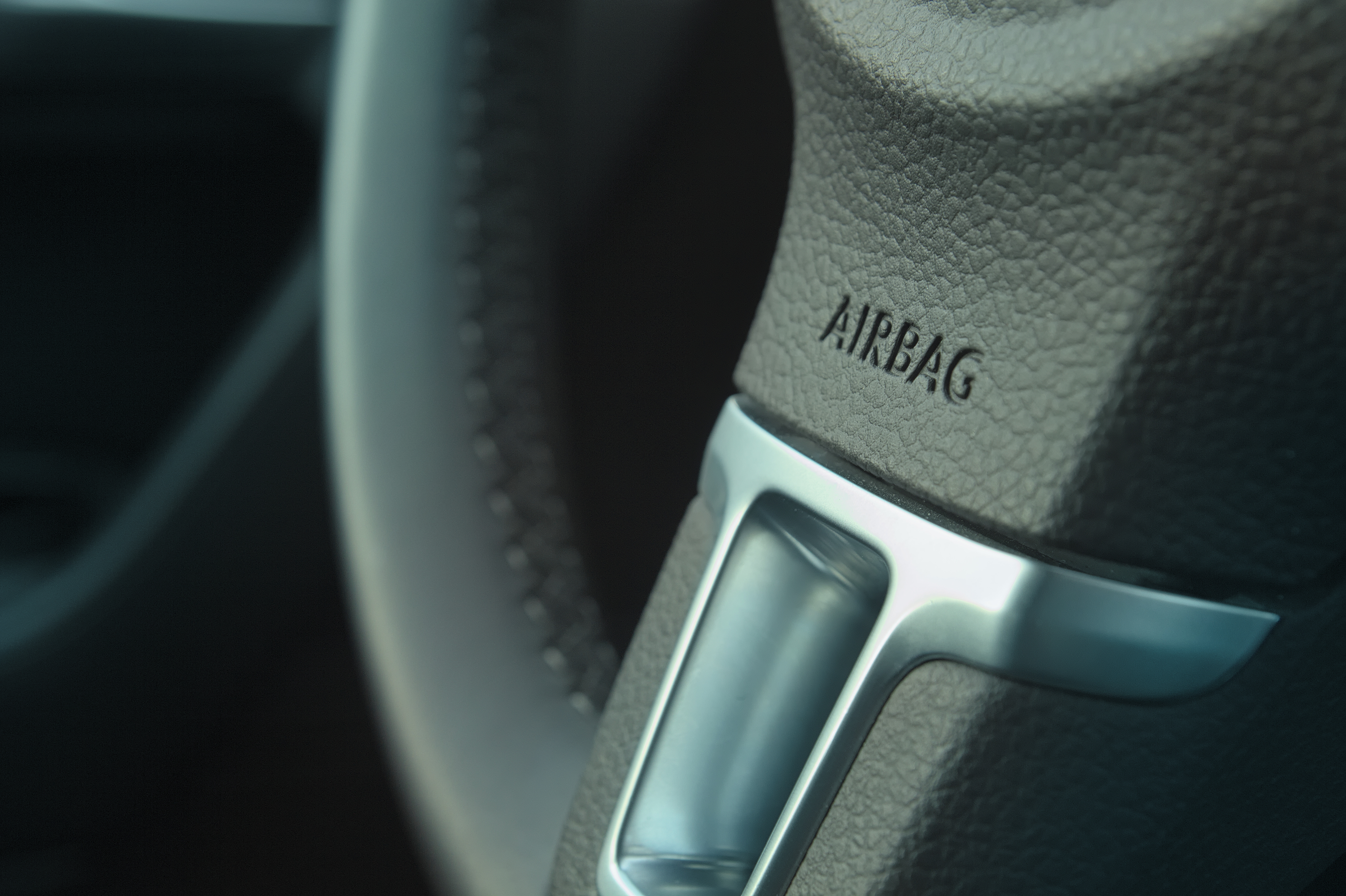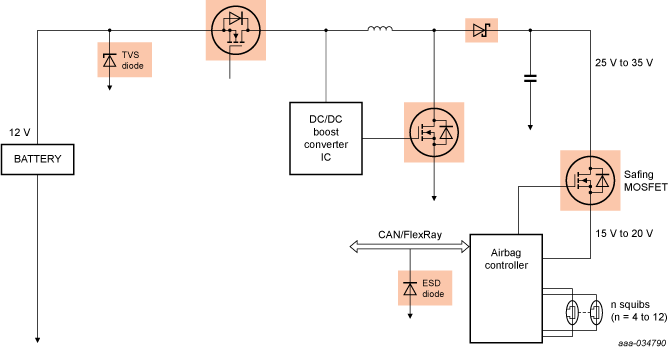Products
Design considerations
- Traditional solutions to Airbag applications are being withdrawn from the market due to unsustainability
- Enhanced SOA technology provides similar linear mode performance in a sustainable silicon technology
- For pulsed linear mode applications, such as the Safing MOSFET in airbags, Nexperia’s ASFETs provide the required robustness while delivering significant board space savings (up to 84% with an LFPAK33 device) compared to traditional DPAK solutions
- Airbag firing circuits need a stable voltage of 15 to 20 V, requiring a boost converter to step up the standard 12 V battery voltage to 25–35 V

Automotive ASFETs for airbag applications
When choosing a MOSFET to regulate the supply voltage to the squibs in an airbag system, the choice has traditionally been limited to older generations of silicon technology, such as the legacy wire-bonded DPAK package. Nexperia have designed a range of Application Specific MOSFETS (ASFETs) to address the specialised needs of airbag applications, focused on enhanced SOA performance for improved linear mode.
Reverse battery protection in automotive applications
This aim of this interactive application note is to help the reader gain an insight into how to protect 12 V automotive systems from being exposed to a reversed biased battery condition e.g. during maintenance where the battery leads may be reconnected in the opposite polarity.
